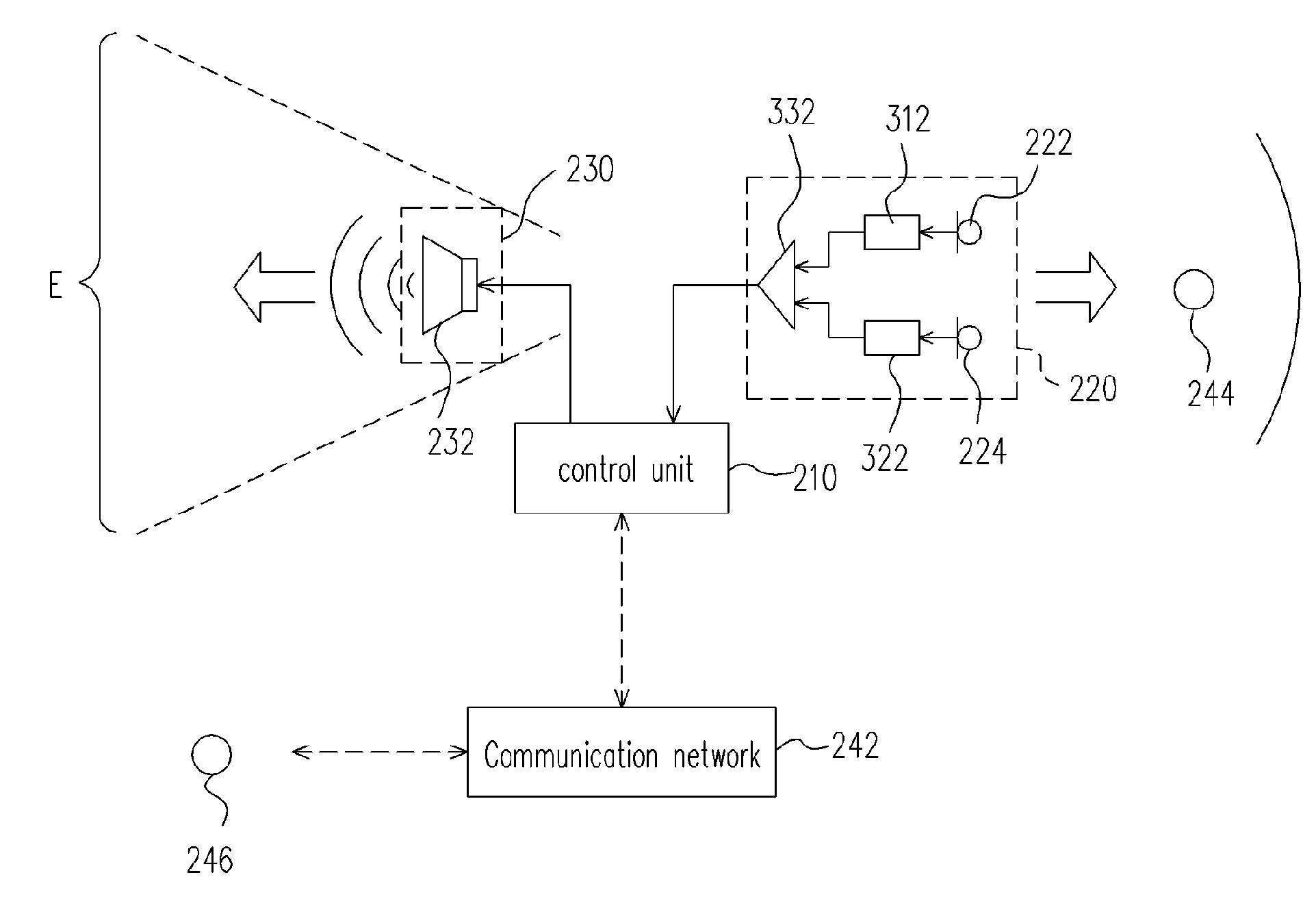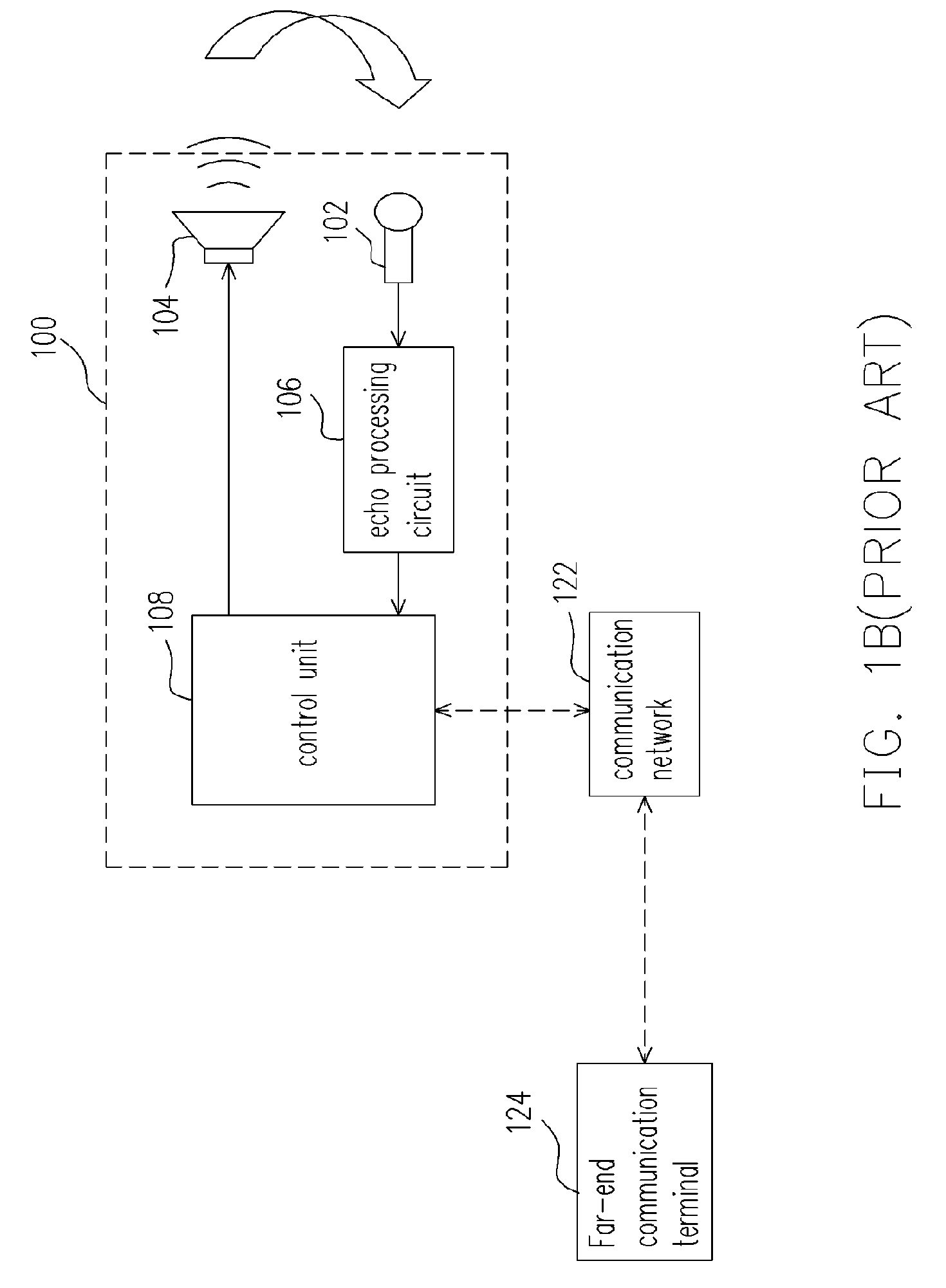Dual microphone communication device for teleconference
a communication device and microphone technology, applied in the direction of transducer details, transducer casings/cabinets/supports, electric transducers, etc., can solve the problems of significant drop in transmission quality, loop back transmission will produce annoying far-end echoes, and reduce interfering echoes, so as to increase the gain of the system, improve the communication quality, and improve the effect of user clarity
- Summary
- Abstract
- Description
- Claims
- Application Information
AI Technical Summary
Benefits of technology
Problems solved by technology
Method used
Image
Examples
Embodiment Construction
[0033] Reference will now be made in detail to the present preferred embodiments of the invention, examples of which are illustrated in the accompanying drawings. Wherever possible, the same reference numbers are used in the drawings and the description to refer to the same or like parts.
[0034]FIG. 2 is a schematic block diagram showing an electrical transmission system according to one preferred embodiment of the present invention. As shown in FIG. 2, a control unit 210 is coupled to an input module 220, an output module 230 and a communication network 242. A group of people 244 may use the device of this invention to communicate with another group of people 246 through a communication network 242 such as a public telephone exchange network. First, a near-end audio signal (for example, the audio frequency signal output from the output module 230 and the sound produced by the group of people 244) produced by the group of people 244 is fed into the input module 220. Thereafter, the ...
PUM
 Login to View More
Login to View More Abstract
Description
Claims
Application Information
 Login to View More
Login to View More - R&D
- Intellectual Property
- Life Sciences
- Materials
- Tech Scout
- Unparalleled Data Quality
- Higher Quality Content
- 60% Fewer Hallucinations
Browse by: Latest US Patents, China's latest patents, Technical Efficacy Thesaurus, Application Domain, Technology Topic, Popular Technical Reports.
© 2025 PatSnap. All rights reserved.Legal|Privacy policy|Modern Slavery Act Transparency Statement|Sitemap|About US| Contact US: help@patsnap.com



